Project Reports and Publications
Project Reports
Tracking Eastern Hemlock – 2025
Winter 2025 brought a new kind of adventure: the search for eastern hemlock (Tsuga canadensis). This project, in partnership with Holden Gardens & Forests, focused on identifying candidate lingering hemlocks—trees that have survived woolly adelgid (Adelges tsugae) infestation and may harbor natural genetic resistance.
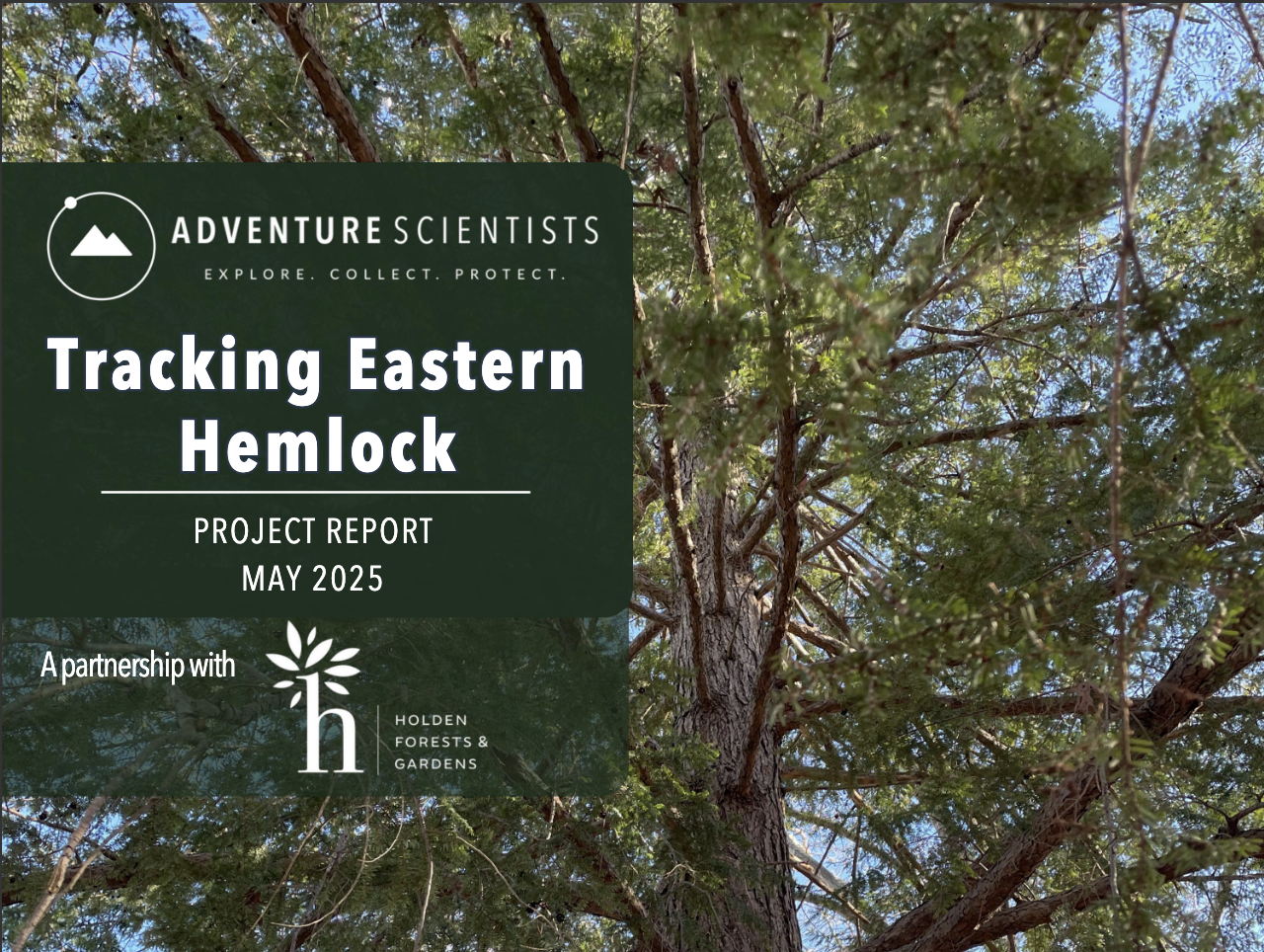
2025 Tracking Eastern Hemlock Report.pdf
Mast Reforestation: Western US – 2024
Adventure Scientists completed the second successful season of the Reforestation: Western U.S. project in 2024. In collaboration with Mast Reforestation, volunteers identified seed cones from nine conifer species: Douglas fir, Engelmann spruce, Jeffrey pine, red fir, white fir, incense cedar, western larch, lodgepole pine, and ponderosa pine.
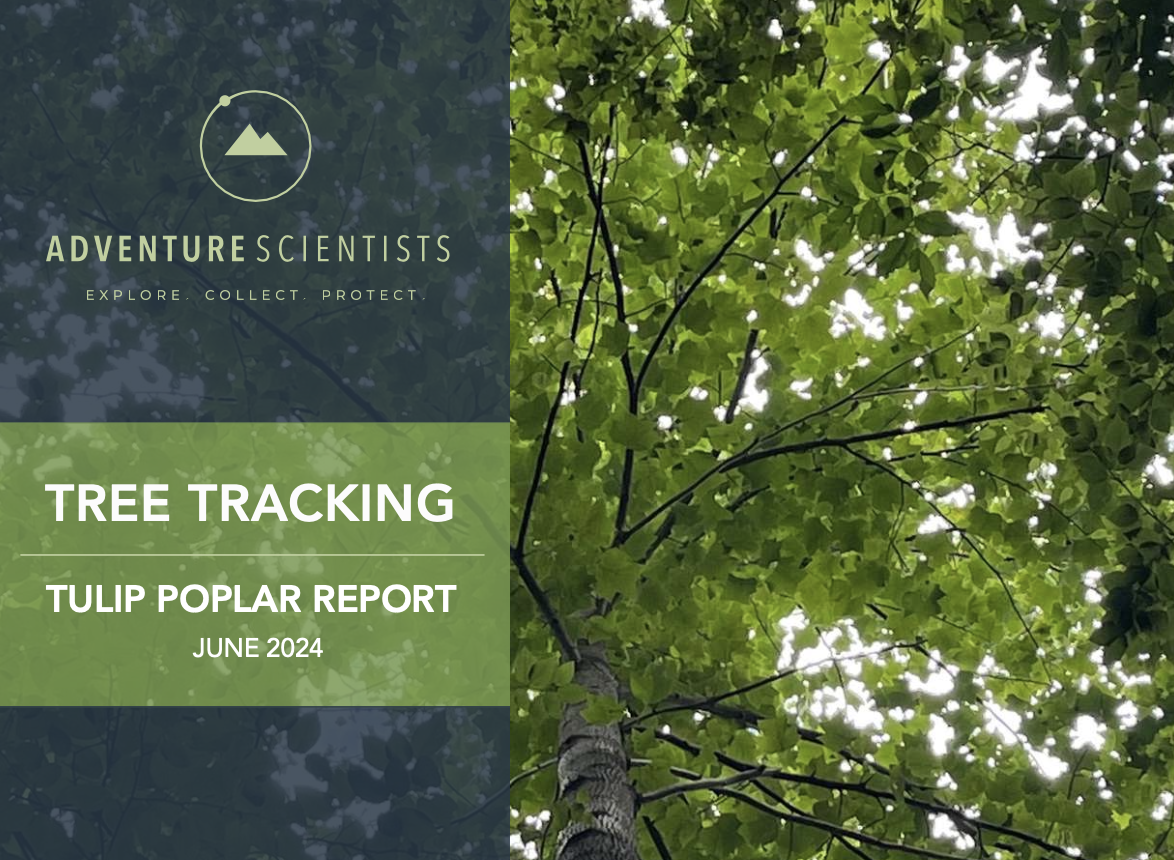
2024 Mast Reforestation: Western US Report.pdf
Tree Tracking – 2023 Tulip Poplar Report
In 2023, Adventure Scientists sampled tulip poplar (Liriodendron tulipifera) trees across 21 states in the eastern United States, an ongoing, multi-year effort to mobilize, train, and equip volunteers to collect samples from trees for scientific partners to create vital databases on tree species that will help protect forests, promote sustainable harvest, and conserve biodiversity.

2023 Tulip Poplar Tree Tracking Report.pdf
Tree Tracking – 2023 Ash Report
In 2023, marking the sixth year of the Tree Tracking project, Adventure Scientists sampled green ash (Fraxinus pennsylvanica) and white ash (Fraxinus americana) tree populations across 14 states in the eastern United States. From May through September 2023, volunteers collected 1,962 leaves and 4,794 buds. Our partners at the Schatz Center for Tree Molecular Genetics sequenced the DNA to create a genetic library that can be used to estimate diversity between and within ash popluations, drivers of genetic differences across the species range, and population size differences.
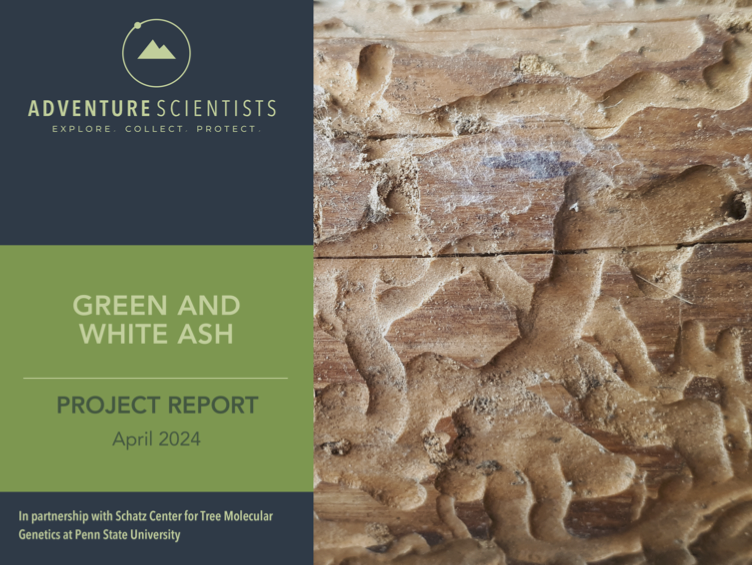
2023 Ash Tree Tracking Report.pdf
Reforestation: Western US – 2023 Report
Adventure Scientists completed a successful season of the Reforestation: Western U.S. project in 2023. Reforestation was a new project for the organization, with a goal of identifying seed cones from nine conifer (evergreen, cone-producing) species. Knowing the location and abundance of these cones is crucial for sourcing seed for widespread reforestation efforts that help ecosystems recover from disturbances like wildfires and timber harvests. Our partners at Mast Reforestation will use these data on where cones are being produced in the greatest quantities to inform targeted cone collection for reforestation projects.
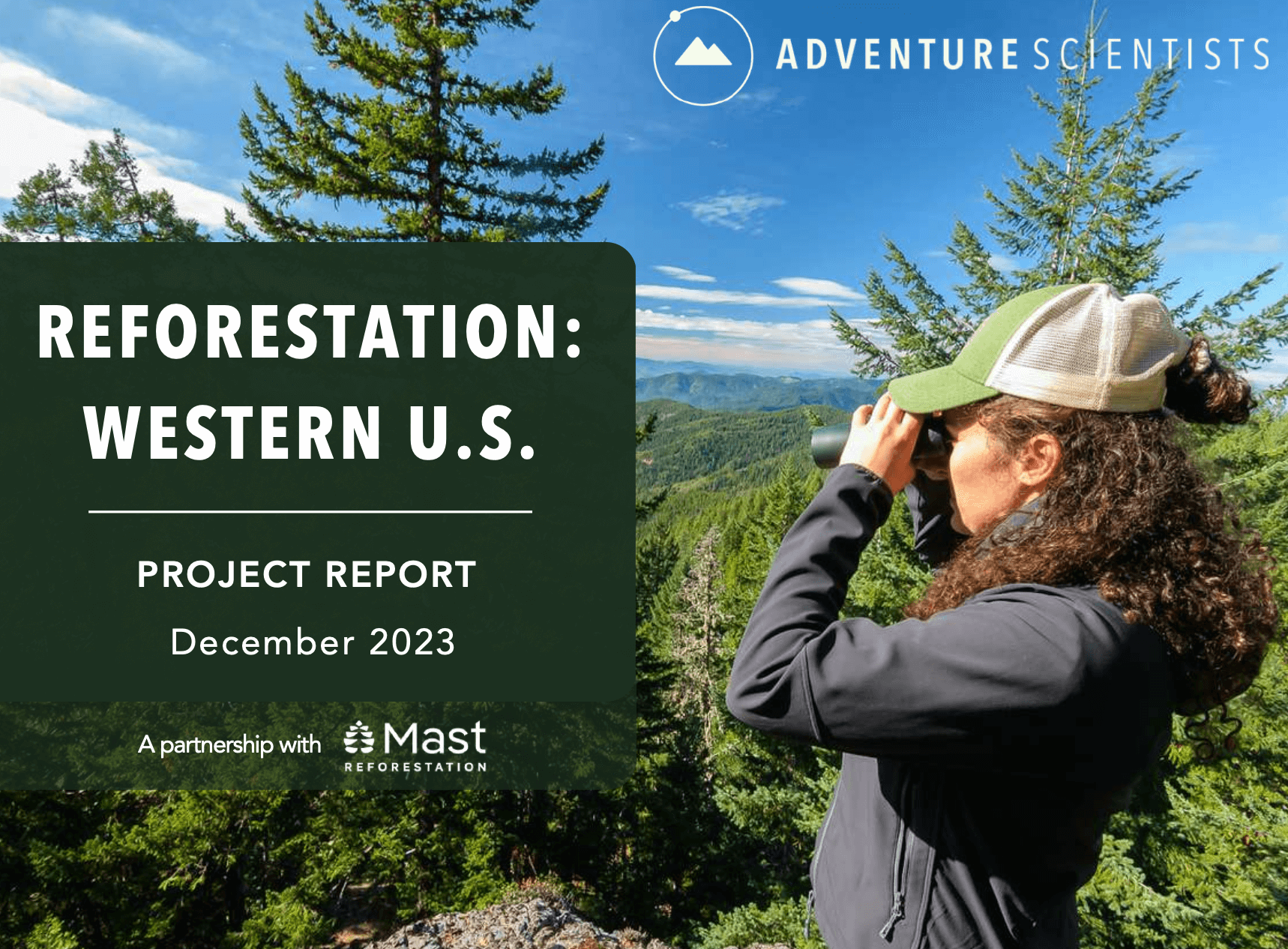
2023 Reforestation: Western US Report.pdf
Tree Tracking – 2022 Report
In 2022, we began collection of our sixth species of the Tree Tracking project with eastern white oak (Quercus alba). Volunteers collected leaf, twig, acorn caps, and tree core samples from May 2022 through December 2022. In total, 147 volunteer teams collected 4,228 samples of leaves, twigs, acorn caps, and cores from 1,567 trees. Samples were collected from 34 states in the eastern and central U.S., covering the full extent of the species range. Our partners at the U.S. Forest Service will analyze these samples to build comprehensive genetic and chemical reference libraries that will enable land managers to enforce anti-poaching regulations, improve forestry management practices, and plan for climate change impacts.
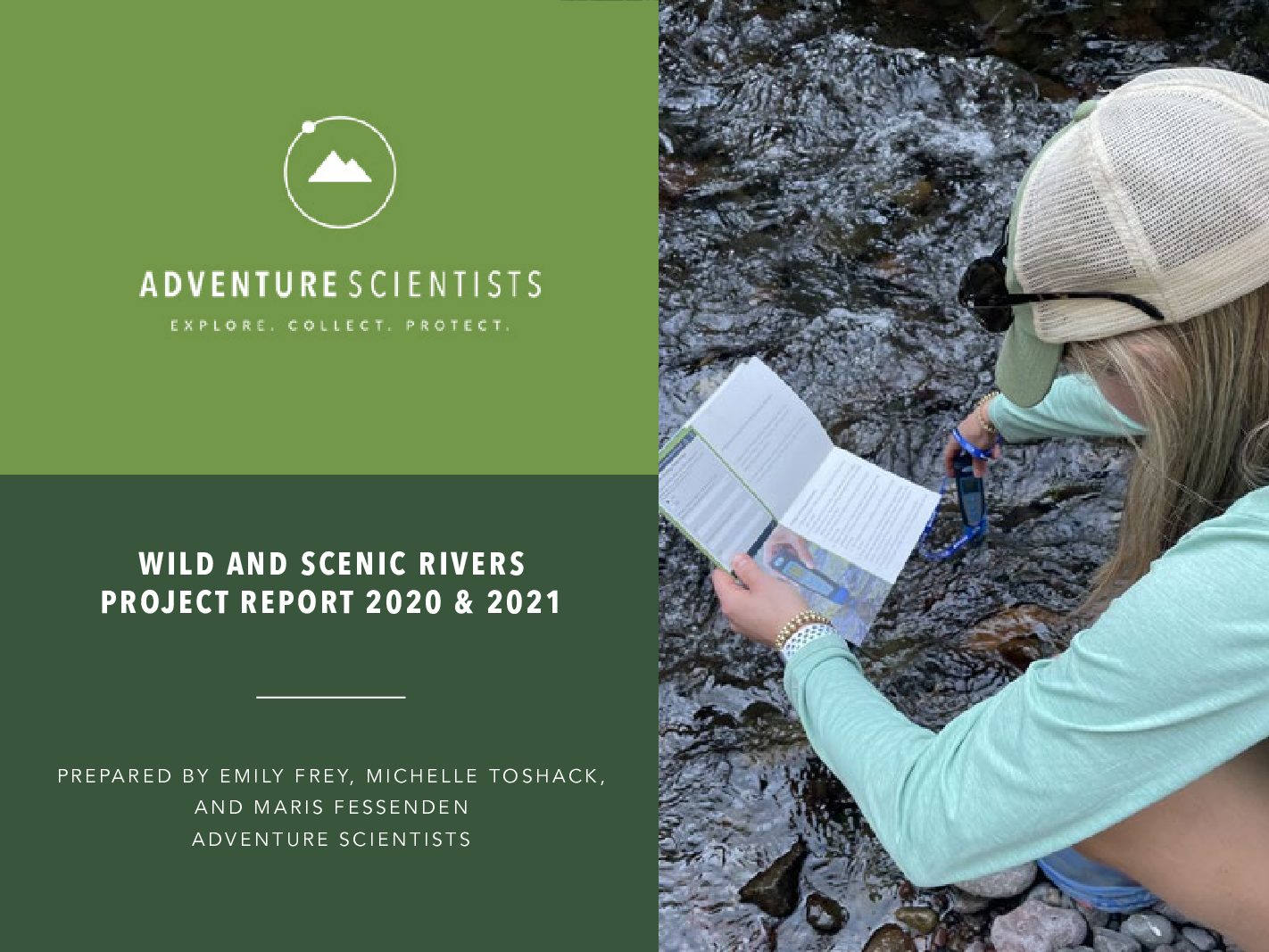
2022 Eastern White Oak Tree Tracking Report.pdf
Tree Tracking – 2021 Report
Adventure Scientists’ embarked on its fifth species of the Tree Tracking project by adding eastern black walnut (Juglans nigra) sample collection. Volunteers collected leaf, twig, and tree core samples from black walnut trees from July 2021 through January 2022. In total, 145 volunteer teams collected samples from 932 trees. Their collection included 483 leaf samples, 942 twig samples, and 491 tree core samples. We took samples from black walnut trees in 32 states in the eastern and central U.S., covering the full extent of the species range. Our partners at the U.S. Forest Service will analyze these samples to build comprehensive genetic and chemical reference libraries that will enable land managers to enforce anti-poaching regulations, improve forestry management practices, and plan for climate change impacts.
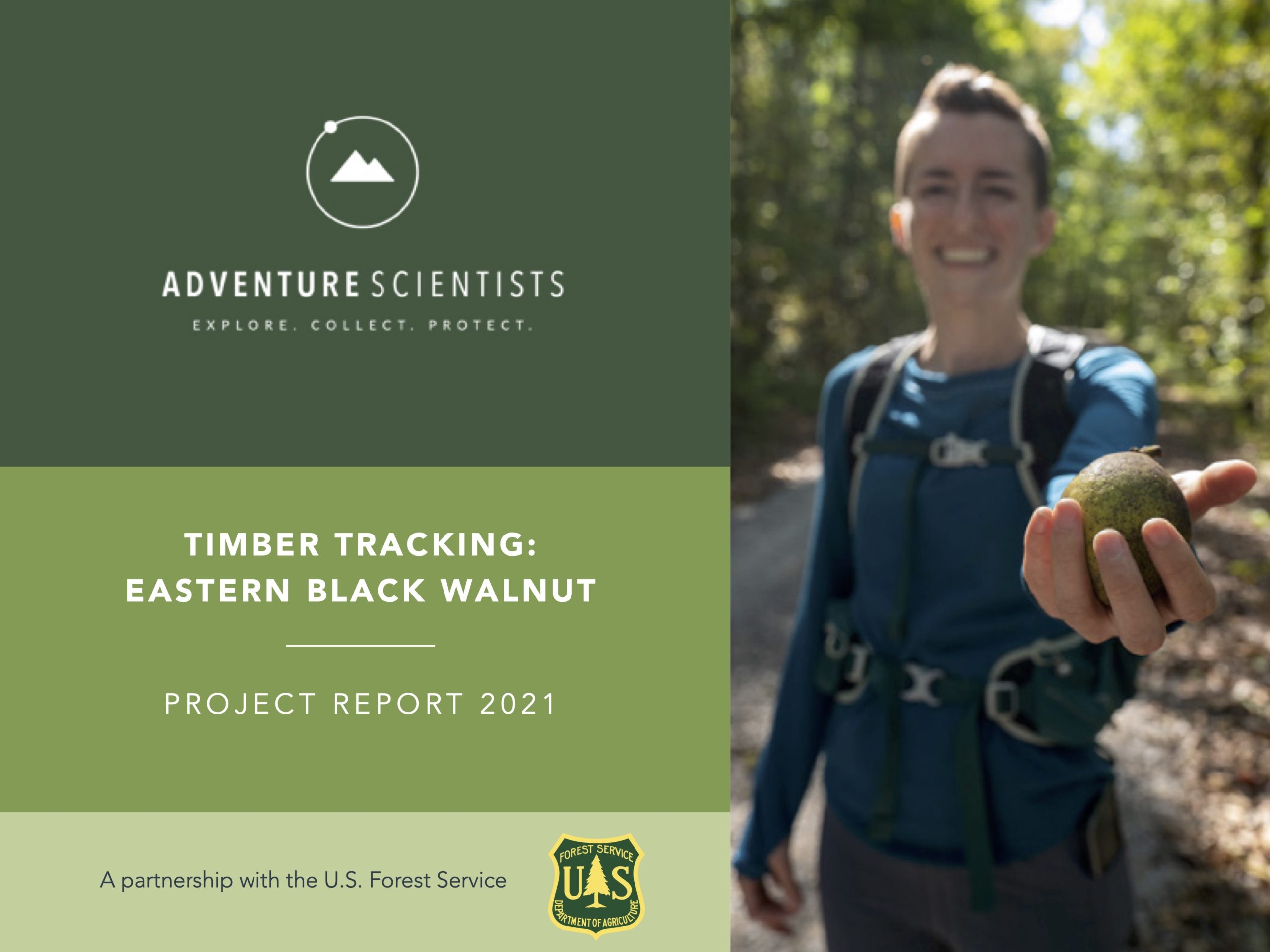
2021 Black Walnut Tree Tracking Report.pdf
Wild and Scenic Rivers – 2020 & 2021 Report
Adventure Scientists’ volunteers successfully completed the first two field seasons of the four-year-long Wild and Scenic Rivers project. The project seeks to address water quality data gaps and update the status of Wild and Scenic Rivers across the nation, improving how these river systems are managed and protected.

2020-2021 Wild and Scenic Rivers Report.pdf
Conserving Biodiversity: Pollinators – Final Report 2017-2020
Adventure Scientists’ Conserving Biodiversity: Pollinators Project provides data on pollinator abundance and diversity from remote areas where data gaps limit scientists’ and land managers’ ability to protect species and habitats at risk. In collaboration with Dr. Katy Prudic from the University of Arizona, the project launched in 2017 in 37 field sites across the western United States managed by the U.S. Forest Service (USFS). Volunteers with the project conducted butterfly and wildflower surveys in subalpine habitats from 2017 – 2020.
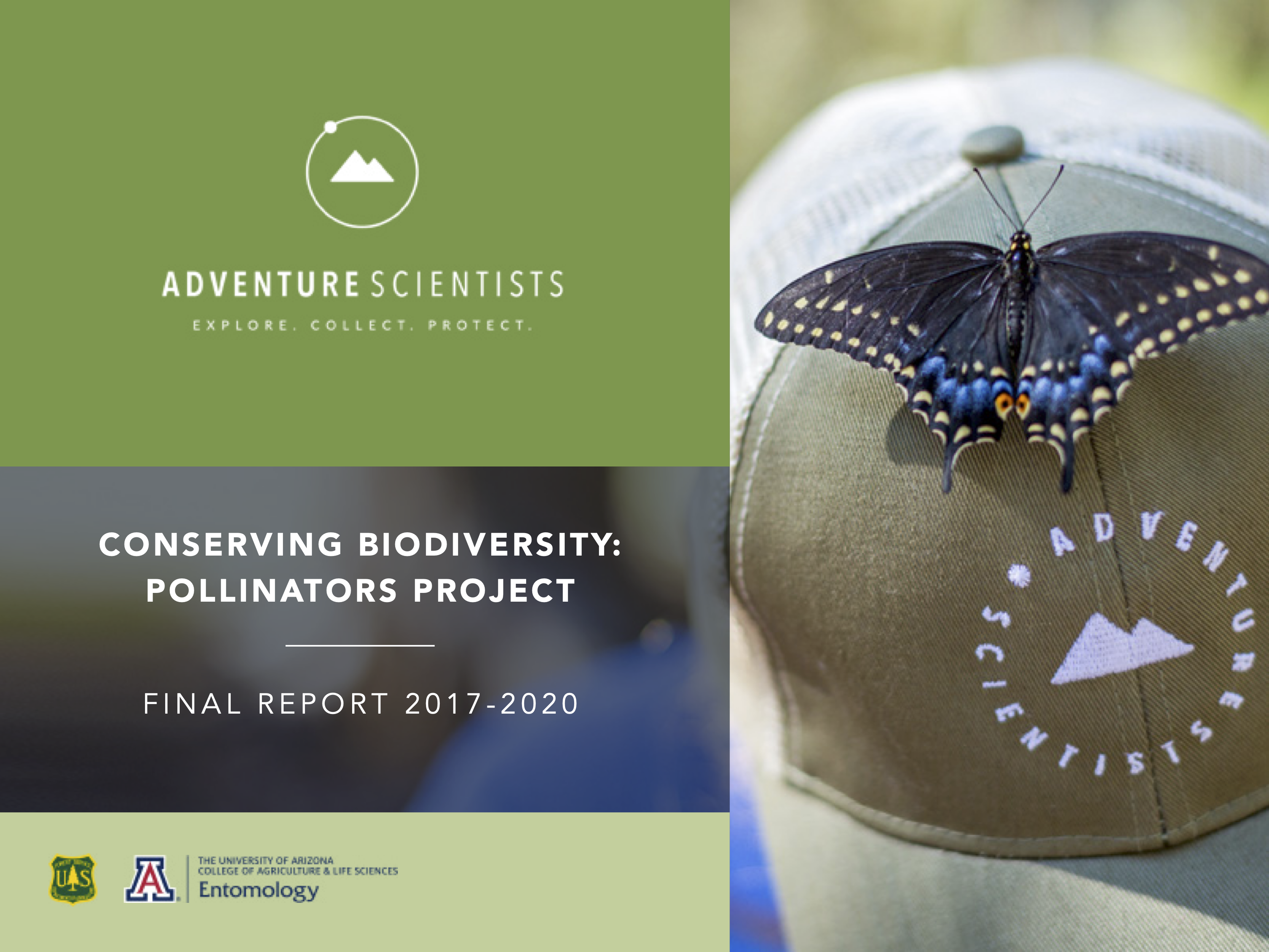
Pollinators Final Report.pdf
Tree Tracking – 2019 Report
Our 2019 Tree Tracking project focused on coast redwood, western redcedar and Alaska yellow-cedar. Volunteer adventurers collected 2,282 coast redwood samples from across entirety of the species’ natural range in an effort that supports both the US Forest Service in combatting timber theft and Save the Redwoods League in restoring forests with climate-resilient trees. Volunteers also collected 1,155 western redcedar samples and 402 Alaska yellow-cedar samples, which will help establish new genetic and chemical databases that can be used to prosecute timber theft and understand how forests are changing due to climate.
2019 Redwood and Cedar Tree Tracking Report.pdf
Tree Tracking – 2018 Report
The 2018 pilot season of Adventure Scientists’ Tree Tracking project engaged 110 volunteers who succeeded in sampling from 1,023 bigleaf maples across California, Oregon, Washington, and British Columbia. The resulting collections will fuel the research and development of multiple wood identification technologies to battle against the illegal timber trade.
2018 Bigleaf Maple Tree Tracking
Conserving Biodiversity: Pollinators – 2017 Report
With 94 volunteers observing more than 500 butterflies and nearly 700 wildflowers, the results of our 2017 field season present a robust picture of backcountry biodiversity in alpine meadows of the Western United States.
2017 Conserving Biodiversity: Pollinators
Global & Gallatin Microplastics Initiatives – 2017 Final Report
Our two Microplastics Initiatives conducted surveys of microplastics pollution in aquatic ecosystems from 2013-2017. The results show that globally, microplastics are accumulating at a higher rate in marine systems than in freshwater systems and that microplastic contamination is ubiquitous across remote sample locations in both marine and freshwater systems––including glaciers.
Global & Gallatin Microplastics Initiatives Final Report
Rare Carnivore Monitoring in the Uinta-Wasatch-Cache National Forest – 2016 Report
Adventure Scientists report on the Uinta Carnivore Connectivity Project with the USDA Forest Service to train volunteers and lay out a network of 30 cameras in 14 remote drainages. The sites recorded more than 3000 camera-nights of data, fifteen species of wildlife, and nearly 20,000 camera trap images and video clips.
Rare Carnivore Monitoring, Uinta National Forest
Marine Diversity and Protected Areas in Palau – 2015 Report
The National Geographic Pristine Seas report from their expedition to the Republic of Palau includes data from samples gathered for our Marine Microplastics Project. This report was provided to the government of Palau.
2015 Pristine Seas Report, Republic of Palau
Veterans Lynx Tracking, Helena National Forest, Montana – 2015 Report
2015 Lynx Tracking with Veterans, Helena National Forest
Coastal Pacific Marten Survey, Olympic National Forest – 2014 Report
2014 Marten Survey, Olympic National Forest
Yellow Cedar Study, Southeast Alaska – 2013 Report
2013 Yellow Cedar Study, Southeast Alaska
Camera Trap Study, Hebgen Lake, Montana – 2013 Report
2013 Hebgen Wildlife Survey, Hebgen Lake
Wolverine Expedition, Darhad Region, Mongolia – 2013 Report
2013 Wolverine Survey, Mongolia
Coastal Pacific Marten Survey, Olympic National Forest – 2013 Report
2013 Marten Survey, Olympic National Forest
Military Veterans and Families Grizzly Tracking, Tobacco Root Mountains, Montana – 2012 Report
2012 Grizzly Tracking with Veterans, Tobacco Roots
Wolverine Tracking, Helena National Forest, Montana – 2011
2011 Grizzly/Whitebark Monitoring, Centennial Mountains
Publications
Tree Tracking
Cronn, Richard C., et al. 2021. “Range-wide assessment of a SNP panel for individualization and geolocalization of bigleaf maple (Acer macrophyllum Pursh)” Forensic Science International: Animals and Environments, Vol. 1.
Wildlife Connectivity
Siegar, Josianne, et al. 2020. “Species and Demographic Responses to Wildlife-Friendly Fencing on Ungulate Crossing Success and Behavior.” Conservation Science and Practice, Vol. 2, Issue 10.
Monge-Nájera, Julián. 2018. “Road Kills in Tropical Ecosystems: a Review with Recommendations for Mitigation and for New Research.” Revista De Biología Tropical, Universidad De Costa Rica, Vol. 66. No. 2.
Coastal Marten Survey
Moriarty, Katie M., et al. 2019. “Status of Pacific Martens (Martes caurina) on the Olympic Peninsula, Washington.” Northwest Science, Vol. 93, No. 2.
Worldwide Pika Project
Smith, Adam B., et al. 2019. “Alternatives to Genetic Affinity as a Context for within-Species Response to Climate.” Nature Climate Change, Vol 9. p. 787-794
Yellow Cedar Study, Southeast Alaska
Oakes, Lauren E., et al. 2015. “Conservation in a Social-Ecological System Experiencing Climate-Induced Tree Mortality.” Biological Conservation, Vol. 192.
Oakes, Lauren E., et al. 2014. “Long‐Term Vegetation Changes in a Temperate Forest Impacted by Climate Change.” Ecosphere, Vol. 5. Issue 10.
Pacific Northwest Glacial Ice Worm Research
Dial, Roman J, et al. 2018. “The Role of Temperature in the Distribution of the Glacier Ice Worm, Mesenchytraeus Solifugus (Annelida: Oligochaeta: Enchytraeidae).” Arctic, Antarctic, and Alpine Research: An Interdisciplinary Journal, Vol. 48. Issue 1.
Worldwide Diatom Study
Bahls, Loren L. 2015. “Kurtkrammeria, a New Genus of Freshwater Diatoms (Bacillariophyta, Cymbellaceae) Separated from Encyonopsis.” Nova Hedwigia, Schweizerbart’sche Verlagsbuchhandlung.
Bahls, Loren L. 2014. “The Role of Amateurs in Modern Diatom Research.” Diatom Research, Vol. 30. Issue 2.
Bahls, Loren L. 2014. “Neidiopsis Hamiltonii Sp. Nov., N. Weilandii Sp. Nov., N. Levanderi and N. Wulffii from Western North America.” Diatom Research, Vol. 29. Issue 4.
Bahls, Loren L. 2014. “New Diatoms from the American West-A Tribute to Citizen Science.” Proceedings of the Academy of Natural Sciences of Philadelphia, Vol. 163. Issue 1.
Snow and Ice
Carey, Mark, et al. 2017. “Climbing for Science and Ice: From Hans Kinzl and Mountaineering-Glaciology To Citizen Science in the Cordillera Blanca.” Revista De Glaciares y Ecosistemas De Montaña.
Global Microplastics Initiative
Lima, A.R.A., et al. 2021 “Global Patterns for the Spatial Distribution of Floating Microfibers: Arctic Ocean as a Potential Accumulation Zone.” Journal of Hazardous Materials, 403: 123796.
Montoto-Martínez, Tania, et al. 2020. “Pump-Underway Ship Intake: An Unexploited Opportunity for Marine Strategy Framework Directive (MSFD) Microplastic Monitoring Needs on Coastal and Oceanic Waters.” Public Library of Science, Vol. 15. Issue 5
Rasmussen, Lisa M. 2019. “When Citizens Do Science: Stories from Labs, Garages, and Beyond.” Narrative Inquiry in Bioethics, Vol. 9. No. 1. p. 1-4.
Barrows, Abigail P.W., et al. 2018. “Marine Environment Microfiber Contamination: Global Patterns and the Diversity of Microparticle Origins.” Environmental Pollution, Vol. 237.
Waller, Catherine L, et al. 2017. “Microplastics in the Antarctic Marine System: An Emerging Area of Research.” Science of the Total Environment, Vol. 598.
Pate, J.A., and E.E. McKinnon. 2016. “A Citizen Engagement Approach to Water Advocacy: Experiences from ‘EXXpedition Great Lakes.’” Maritime Affairs: Journal of the National Maritime Foundation of India,Vol. 12. Issue 2.
Barrows, Abigail P. W., et al. 2016. “Grab vs. Neuston Tow Net: a Microplastic Sampling Performance Comparison and Possible Advances in the Field.” Analytical Methods, Issue 9.
Haab, Samantha, and Kimberly Haab. 2016. “The Environmental Impacts of Microplastics: An Investigation of Microplastic Pollution in North Country Waterbodies.” St. Lawrence University, May 2016.
Gallatin Microplastics Initiative
Barrows, Abigail P.W., et al. 2018. “A Watershed-Scale, Citizen Science Approach to Quantifying Microplastic Concentration in a Mixed Land-Use River.” Water Research, Vol. 147. p. 382-392.
Conserving Biodiversity: Pollinators
Forister, M.L., et al. 2021. “Fewer Butterflies Seen by Community Scientists Across the Warming and Drying Landscapes of the American West.” Science, Vol. 371. Issue. 6533. p. 1042-1045.
Prudic, Kathleen L., et al. 2019. “Creating the Urban Farmer’s Almanac with Citizen Science Data.” Insects, Vol. 10. Issue 9. p. 294
Prudic, Kathleen L, et al. 2017. “EButterfly: Leveraging Massive Online Citizen Science for Butterfly Conservation.” Insects, Vol. 8. Issue 2. p. 53.
Whiteworm Lichen Collection
Onuț-Brännström, Ioana. 2017. “The Puzzle of Lichen Symbiosis: Pieces from Thamnolia.” Doctoral Thesis, Uppsala Universitet.
Onuţ‐Brännström, Ioana, et al. 2017. “A Worldwide Phylogeography of the Whiteworm Lichens Thamnolia Reveals Three Lineages with Distinct Habitats and Evolutionary Histories.” Ecology and Evolution, Vol. 7. Issue 10. p. 3602-3615.
Other Research
Julia A. Schwartzmana, Francois Lebretona, Rauf Salamzadee, et al. 2023. “Global diversity of enterococci and description of 18 previouslyunknown species” Proceedings of the National Academy of Sciences,
Connolly, C.T., et al. 2018. “Watershed Slope as a Predictor of Fluvial Dissolved Organic Matter and Nitrate Concentrations across Geographical Space and Catchment Size in the Arctic.” Environmental Research Letters, Vol. 13. No. 10.
Macfarlane W.W, W.R. Kern, D.J. Mattson and J.A. Logan. 2013. Pilot Study: Gauging the impact of whitebark pine mortality on occurrence of Clark’s nutcracker, red squirrel, black bear and grizzly bear. Ecogeomorphology and Topographic Analysis Laboratory, Utah State University, Prepared for Natural Resources Defense Council, Logan, Utah, 23 pp.
